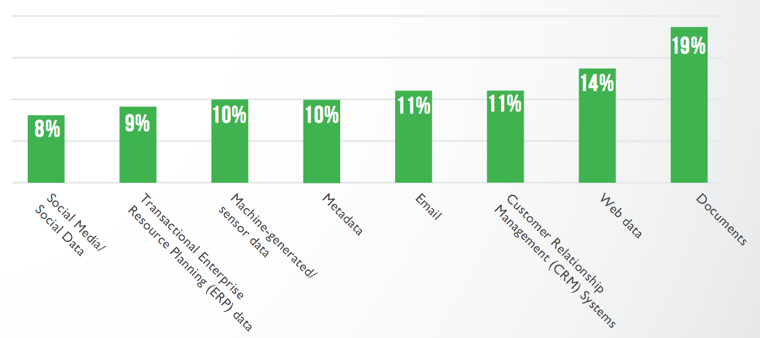Turning Big Data into Actionable Ideas
Big Data is key to improving operations within local government agencies and improving services to citizens. The problem is that the trend is still new enough that there aren’t many case studies available. The cost is high, but as some governments are proving, well worth it.
StateTech took a look at GovLoop’s “Transforming Your Agency With Big Data” survey and pulled a few key takeaways. The full report can be downloaded here.
Where Does Big Data Come From?

Big Data is generated by a number of online and offline activities. Respondents identified documents as the largest source of data, followed by several web activities, including email and social media. As they move more services to the Internet and provide more self-service platforms, governments have more data at hand. By streamlining their processes and generating more valuable data, governments could improve services exponentially.
Additional questions explored where agency data came from and who creates agency data. The survey shows that the leading way respondents collect data is through capturing information from documents, whether they are print or digital. Clearly, with the growth of self service platforms, and increasing examples of transactions performed online, government is flooded with documents, and they serve as one of the primary sources of data for organizations. Additionally, web data and email both were in the top three for data sources.
What’s Driving Big Data?

There are so many use cases for Big Data that it can be difficult for governments to decide where to start. Of the public-sector officials surveyed, many (26 percent) said they are looking for ways to use data to boost efficiency. Others (23 percent) want to optimize government services. A slew of other goals make up the rest of the motivations behind Big Data initiatives.
What is holding governments back? Budget, for starters, but also resources. In order to leverage Big Data, governments need the right people as well as the right hardware and software. Those resources are slowly becoming more affordable, paving the way for widespread adoption of Big Data initiatives.
“The extraction of big ideas from data”
Philadelphia was the first major city to get a chief data officer with the hiring of Mark Headd. He encourages local governments to set realistic goals, noting that Big Data is an opportunity for agencies within a local government to collaborate:
Headd continues to describe the difference between federal and local applications of big data: “Philadelphia does not have petabytes of data, we are not the census bureau, we are not the federal government, at a municipal government scale, and even at the state level, it’s less about specialized technology, and its more about data across departments and across agencies.” Although Headd identifies that Philadelphia is not collecting the same volume of data as the federal government, across all levels of government, agencies are challenged to break down siloes and work collaboratively to share data, which can provide leaders with new insights and improved decision-making.
Successful initiatives will have to start small, especially in the public sector, where budgets are often tight, but that doesn’t mean it can’t be a revolutionary tool for local governments.








